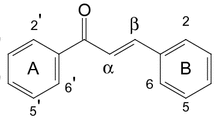Abstract
A mycoparasite PG52 isolated from aeciospore piles of Aecidium pourthiaea was identified as Pestalotipsis sp. The chemical constituents of Pestalotipsis sp. PG52 were investigated. Four novel polyketides, named pestalpolyols E–H (1–4), were isolated from solid fermentations of Pestalotiopsis sp. PG52. Their structures were elucidated by interpretation of extensive spectroscopic methods, including 1D and 2D NMR, HR-MS experiments; and the absolute configuration of 1 was confirmed by single-crystal X-ray diffraction analysis using the anomalous scattering of Cu Kα radiation. Compounds 2–4 showed cytotoxic activities against human tumor cell lines.



Similar content being viewed by others
References
Cimino G, Sodano G, Spinella A (1985) Aglajne-1, a polypropionate metabolite from the opisthobranch mollusk Aglaja depicta: Determination of carbon-carbon connectivity via long-range 1H-13C couplings. Tetrahedron Lett 26:3389–3392
Flack HD, Bernardinelli G (2008) The use of X-ray crystallography to determine absolute configuration. Chirality 20(5):681–690
Hooft RW, Straver LH, Spek AL (2008) Determination of absolute structure using Bayesian statistics on Bijvoet differences. J Appl Crystallogr 41:96–103
Hopkins KE, McQuilken MP (2000) Characteristics of Pestalotiopsis associated with hardy ornamental plants in the UK. Eur J Plant Pathol 106:77–85
Kasai Y, Komatsu K, Shigemori H, Tsuda M, Mikami Y, Kobayashi J, Cladionol A (2005) A polyketide glycoside from marine-derived fungus Gliocladium species. J Nat Prod 68:777–779
Keith LM, Velasquez ME, Zee FT (2006) Identification and characterization of Pestalotiopsis spp. causing scab disease of guava, Psidium guajava, in Hawaii. Plant Dis 90:16–23
Lee JC, Strobel GA, Lobkovsky E, Clardy J (1996) Torreyanic acid: a selectively cytotoxic quinone dimer from the endophytic fungus Pestalotiopsis microspora. J Org Chem 61:3232–3233
Li EW, Jiang LH, Guo LD, Zhang H, Che YS (2008) Pestalachlorides A-C, antifungal metabolites from the plant endophytic fungus Pestalotiopsis adusta. Bioorg Med Chem 16:7894–7899
Liu L, Li Y, Liu SC, Zheng ZH, Chen XL, Zhang H, Guo LD, Che YS (2009) Chloropestolide A, an antitumor metabolite with an unprecedented spiroketal skeleton from Pestalotiopsis fici. Org Lett 11:2836–2839
Maharachchikumbura SS, Guo LD, Chukeatirote E, Bahkali AH, Hyde KD (2011) Pestalotiopsis—morphology, phylogeny, biochemistry and diversity. Fungal Divers 50:167–187
Strobel G, Daisy B, Castillo U, Harper J (2004) Natural products from endophytic microorganisms. J Nat Prod 67:257–268
Su J, Zhao P, Kong L, Li X, Yan J, Zeng Y, Li Y (2013) Trichothecin induces cell death in NF-κB constitutively activated human cancer cells via inhibition of IKKβ phosphorylation. PLoS One 8(8):e71333
Taylor JE, Crous PW, Palm ME (2001) Foliar and stem fungal pathogens of Proteaceae in Hawaii. Mycotaxon 78:449–490
Xu J, Ebada SS, Proksch P (2010) Pestalotiopsis a highly creative genus: chemistry and bioactivity of secondary metabolites. Fungal Divers 44:15–31
Acknowledgments
This work was supported by the National Basic Research Program of China (973 Program, 2013CB127505), the NSFC (31170061) and the Applied Basic Research Foundation of Yunnan Province (2013FA018). We acknowledge the Department of Instrumental Analysis of Kunming Institute of Botany for measuring the optical rotations, UV, NMR, X-ray and mass spectra.
Author information
Authors and Affiliations
Corresponding author
Ethics declarations
Conflict of interest
The authors have no conflict of interest to declare.
Additional information
Jin Xie and Jing Li have contributed equally to this work.
Rights and permissions
About this article
Cite this article
Xie, J., Li, J., Yang, YH. et al. Four pestalpolyols from a mycoparasite Pestalotipsis sp. PG52. Arch. Pharm. Res. (2015). https://doi.org/10.1007/s12272-015-0675-7
Received:
Accepted:
Published:
DOI: https://doi.org/10.1007/s12272-015-0675-7




